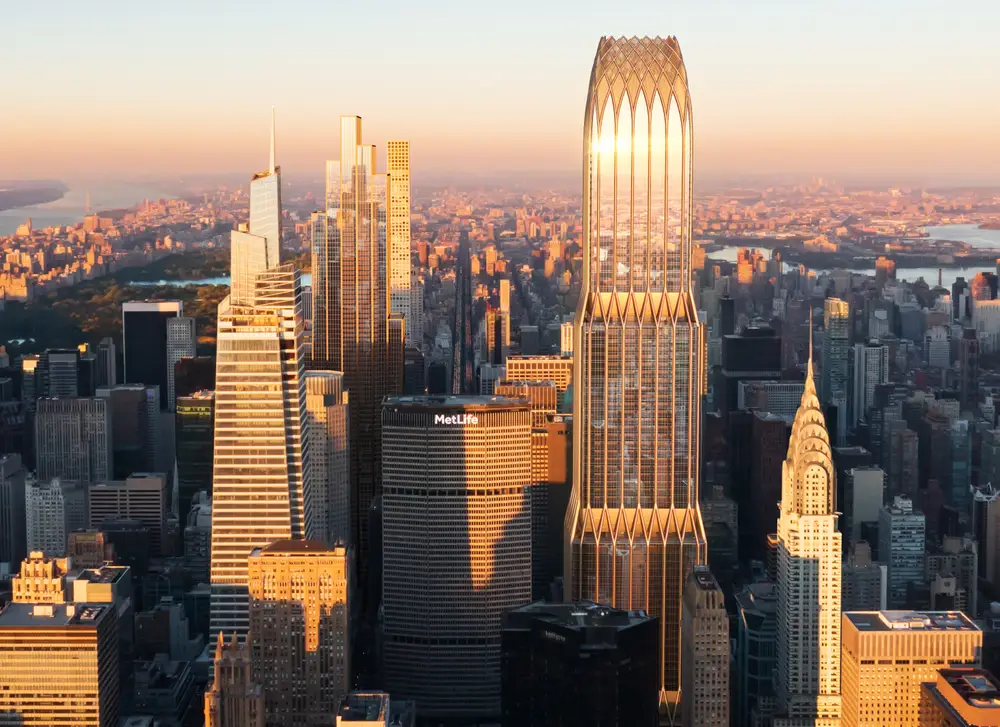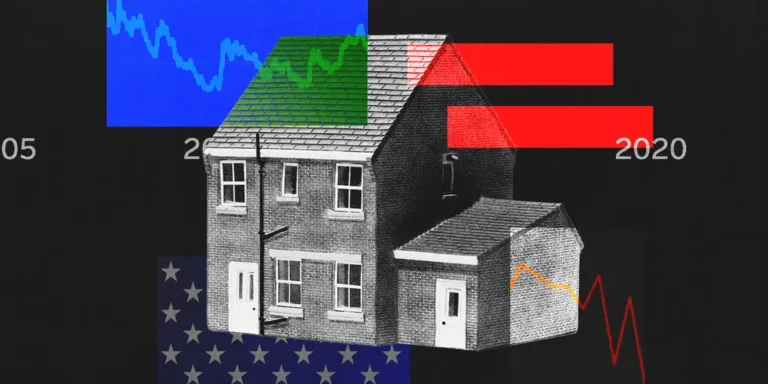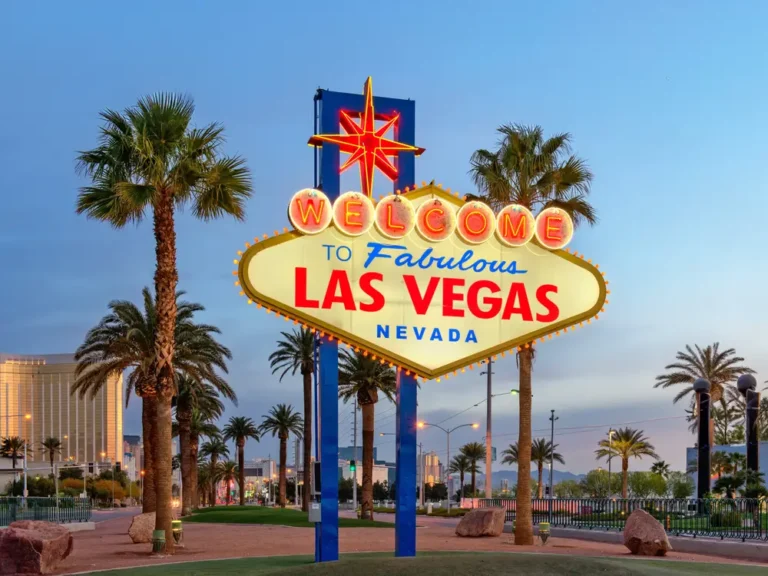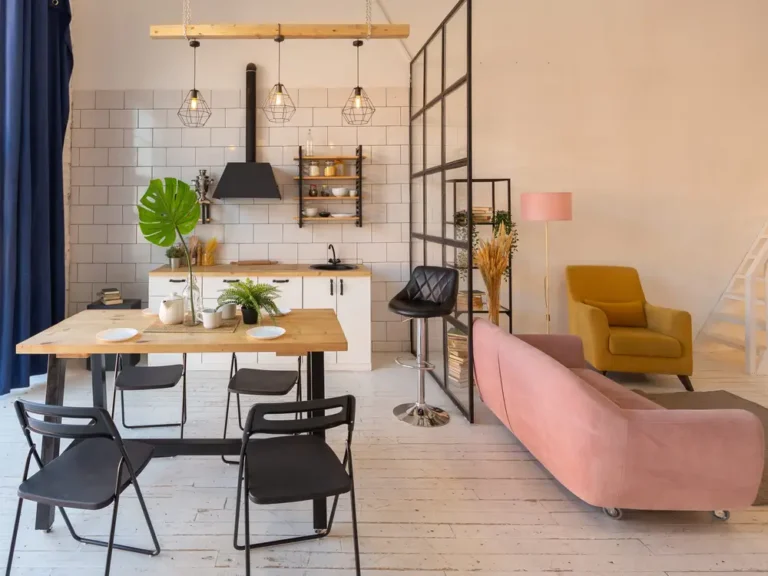What office meltdown? Developers see a shortage of high-end space and are rushing to build it.

Office vacancy is at a record high in Washington, DC, and the city is regarded as one of the nation’s most challenged markets – in part because of its heavy reliance on federal tenants that have continued to slim down their spaces.
Yet Hilary Goldfarb, a senior managing director at Rockefeller Development who leads the company’s Washington, DC, operations, has little doubt about the sleek 400,000-square-foot office property her firm is raising at 600 Fifth St.
When the building is completed in mid-2026, Goldfarb says she is “confident it will be full.”
“This is not hope as a strategy,” she added, noting that half of the project was pre-leased to the law firm Crowell & Morning. “It’s based on real data and real activity.”
Across the country, major office markets from New York to San Francisco have been pummeled by the lasting popularity of remote and hybrid work. Newly built, high-end offices, however, are finding takers.
That demand has persisted even as office construction has been stifled by higher interest rates and inflation, which have pushed up costs. Worries over the health of the office market have also made lenders reluctant to finance new development.
About 30 million square feet of new office space will be completed this year in the US, roughly half of what was built in 2019, before the pandemic, says CBRE, the real estate services firm. In 2025, deliveries will fall even further, to 14 million square feet, CBRE projects.
While the overall office market is awash in hundreds of millions of square feet of empty space, CBRE predicts that vacancy in the market’s upper segment will drop to pre-pandemic levels by 2027 – around the same time projects that are breaking ground now will be ready.
A growing number of office developers have taken notice and see a budding shortage they are eager to cater to. Large office tenants, who often plan their space decisions years in advance, have also begun to recognize that while space options may abound now, they are likely to vanish in the coming years – raising interest in new development.
“The last six, seven months, there’s not just people coming kicking the tires, there’s people that are really looking to engage,” said Scott Rechler, the CEO of RXR, referring to what he says is growing tenant interest in 175 Park Ave., a 2.8-million-square-foot skyscraper designed by Skidmore, Owings & Merrill that developers RXR and TF Cornerstone are planning next to Grand Central Terminal in midtown Manhattan.
The group now aims to begin construction on the more than $4 billion, 1,575-foot-tall tower midway through 2025 and with significantly less pre-leasing than originally planned because of their growing confidence in demand. Asking rents at the tower will be above $200 per square foot, among the highest ever sought in the city.
“There used to be a point where we thought we would need to pre-lease all of it,” Rechler said. “Now, we think that at 500,000 feet, it’s probably enough to get going.”
Rechler said that interest in elite new space had been stoked by other high-end offerings in the market, such as One Vanderbilt, a recently built nearby tower, JPMorgan’s new headquarters at 270 Park Ave., and a planned skyscraper at 350 Park Ave. that will house the investment firm Citadel.
“If your competitors have a building like that that they’re identified with and you’re trying to be on a parallel path, you’re going to say I want to be in a space at the same level or better,” Rechler said.

A rendering of the North East Terrace at the planned 70 Hudson Yards office building.
Other developers are laying plans for new towers
The large development firm Related Companies, meanwhile, says that four office towers it has built with Oxford Properties as part of their Hudson Yards mega-project, are now 99% full. The team is readying to begin a new 45-story, 1.1-million-square-foot office property called 70 Hudson Yards next year.
“We think we’re going to be one of the only new buildings in ’27, ’28 when there’s going to be no new supply,” Philippe Visser, Related’s president of office development, said.
Even as overall office vacancy is now at 15.1% in Manhattan, according to CBRE, Visser sees little competition between the overwhelming majority of that empty space and Hudson Yards, where a number of major corporate names have migrated in recent years to take occupancy of newly built buildings. Tenants include Wells Fargo, KKR, BlackRock, Meta, and L’Oréal.
“All these successful companies who are looking for really dynamic office space want new construction,” Visser said
70 Hudson Yards will feature an array of state-of-the-art features, including a triple-paned glass facade, which greatly enhances the insulating properties of glass exteriors and will make the building more energy efficient and appealing to sustainability-conscious office users.
In Lower Manhattan, Larry Silverstein hinted that he is close to moving ahead with plans to erect the final office skyscraper at the World Trade Center, a 2.8 million-square-foot tower designed by architect Norman Foster.
Rumors abound that Silverstein is close to signing a large lease with American Express that would allow the project to proceed.
“Just stay tuned” was all Silverstein would say about the possible deal at the tower, 2 World Trade Center.
Silverstein said he was certain other tenants would fill up the remainder of the building’s available space once construction is underway.
“When you put everything this buildings has all together, it’s superior,” Silverstein said. “It never left my mind that someday we would succeed in accomplishing Tower 2 – and that’s where we are today.”
Manhattan is particularly conducive to new construction in that it has both a large captive audience of corporate office users and a deep inventory of old, outdated office properties that have fallen out of favor.
But because there is so little office construction on the horizon nationally, builders have begun to lay similar plans in other markets with similar dynamics.
Visser, for instance, says Related expects to break ground on a new 40-story, 925,000-square-foot office tower at 725 W. Randolph St. in Chicago by next year.
Although that city is also awash in available space, the building would be one of the only available newly built office properties in the Fulton Market neighborhood, a desirable sub-district in the city’s West Loop that is known for its retail and restaurants, he said.
Related Ross, a spinoff development firm launched earlier this year by Related’s founder, Stephen Ross, is about to begin construction on 15 City Place, a nearly 500,000-square-foot office building in West Palm Beach, Florida. The project is about 70% pre-leased to an undisclosed roster of tenants, according to Jordan Rathlev, a senior vice president of development at the company.
Rathlev said he recently received a space inquiry from a financial technology firm that is seeking at least 300,000 square feet – far more than 15 City Place can accommodate. The interest from that tenant and others has given a boost to the company’s ambitions to begin building a neighboring office property called 10 City Place that will also be around 500,000 square feet in size.
“The intent is that they’re both going at the same time,” Rathlev said, indicating Related’s hope that it will sign enough anchor tenancy at 10 City Place to build it and 15 City Place simultaneously.
A tale of two office markets
There is a yawning gap between the health of top tier office space and the wider market, according to data from CBRE.
The firm labels new and heavily renovated spaces that meet a host of quality measures as “prime” – a segment that encompasses only 8% of overall office inventory nationally.
A net total of 49.3 million square feet of prime space was absorbed between 2020 and the first quarter of 2024, according to CBRE. Around 170.3 million square feet of net vacancy accrued in the rest of the office market during that same period.
Overall office vacancy nationally was 19.1% in June, close to a record level. Prime vacancy was 15.5% and CBRE forecasts that figure will drop by almost half, to 8.2% by 2027, its pre-pandemic average.
“We believe that this absorption estimate is conservative, and the prime vacancy rate could return to its pre-pandemic level sooner given continued job growth,” Jessica Morin, CBRE’s director of US office research, said.
These top-of-the-market spaces, which charged a 60% premium before the pandemic, are now 84% more expensive than competing spaces.
With little supply, that differential could grow.
“8.2% is a healthy prime market and we expect rent growth in this tranche,” Morin said.
Driving the solid metrics is a lack of new supply.
While a total of 44 million square feet of office space is presently under construction, only about 17.3 million square feet of it, 39% of the total, is considered prime, according to CBRE. 8 million square feet of that is pre-leased, meaning that there is only about 10 million square feet of upcoming available top quality space.
Financing remains a sticking point
Even with the tailwinds, financing high end office construction remains a challenge. Banks have grown wary of lending to office projects, even those that are likely to be a financial success, because of broader concerns around declining values, increased foreclosures, and potential financial losses in the sector.
Rechler said that RXR was considering “alternative strategies” to arrange financing for 175 Park Ave., as a result.
“The scale of this project is of a level, I’m not sure you’d be able to get enough traditional banks, as an example, to be a lender,” Rechler said.
Rechler said RXR has explored other routes to arrange the billions of dollars of debt necessary to fund 175 Park Ave.’s construction, including the municipal bond market, in part because the project includes $500 million of transit upgrades to Grand Central Terminal.
“I feel good,” Rechler said, “that we’ll have the right combination of pre-leasing and financing to begin next year.”






